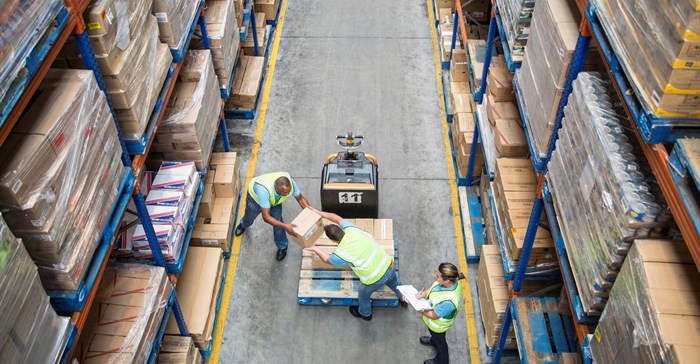
United States-based Dull is a member of the SAPICS supply chain community and one of the international subject matter experts working with SAPICS, The Professional Body for Supply Chain Management, on its Covid-19 support programme for Southern African supply chain professionals. She is also part of the line-up of powerful presenters who will be sharing their insights at a virtual SAPICS Conference on 23 June.
In her current role as principal, supply chain management, at General Electric subsidiary GE Digital, Dull works across the supply chain community to accelerate the transition to a circular economy. Her goal is to progress past a linear "take-make-waste" approach to one in which supply chains around the world are supporting a "make-reuse circular approach to dramatically lengthen the lifecycle of the items around us".
"The circular economy is based on three principles: design waste out; circulate materials and resources, and regenerate natural systems," Dull explained in an article recently published by GreenBiz. "The underlying premise behind the circular economy is that businesses that are strategically anchored in these three principles will be profitable, hedge their risk on raw material pricing, and add trillions to the global economy by 2030, by decoupling financial growth from limited natural resources historically required for growth.
"However, for these business models to be successful, the supply chains that support them must be ready, recognised and expected to offer their capabilities in a new way, and at scale.
"Ultimately, the circular economy is about inventory — extending its life, reusing it, repurposing it or eliminating the need for it altogether. Supply chains are responsible for inventory, and a global, circular economy requires supply chain innovation beyond its current scope in the linear economy."
Dull says that supply chains possess the capabilities that organisations need to go circular. "They move inventory close to the customer. Lean supply chains move inventory and decisions as close to the customer as possible. Proximity reduces the time between inventory decision and actual customer need. Because more inventory is typically required to buffer against uncertainty, decreasing the time decreases the uncertainty, which decreases the need for inventory.
"They create and share data about inventory, including materials, costs, partners, locations, timing, quality, demand. These are all gathered and managed by the supply chain. The data in the supply chain also can be used to facilitate Product-as-a-Service (PaaS) models," Dull notes.
Supply chain’s ability to reduce and eliminate resource requirements also makes it integral to any circular business model. "The supply chain contributes to an organisation’s zero waste goals and can help it to reduce its footprint and impact Supply chains can also circulate inventory. To make the best use of existing inventory and reuse items as many times as possible, a business must know a lot about that inventory. If it cannot virtually ‘see’ its inventory, or if it lacks the ability to easily move it, it often ends up buying or creating more to buffer the system.
"Supply chains can enable organisations to extend the life of inventory, which is critical in the circular economy. This requires data from different sites to ‘talk to each other’, considering forecasted needs and the cost of transfer. Supply chains can enable this."
Because products go through several "generations", it is sometimes necessary for an organisation aiming to go circular to maintain multiple product generations. "As these generations mature, the supply chain capabilities inform product design," explains Dull. "Over time this leads to modular products with lower variability, reducing response times and lowering costs. In addition, the installation period for upgrades is streamlined."
Being able to locate and transform inventory is essential for the circular business. “And supply chain can do this,” Dull stresses. "In order to recirculate items, the inventory must be located and transformed."
Dull has three recommendations for organisations embarking on a circular journey. "First, locate and meet your supply chain team," she advises.
"This team covers procurement, planning, sourcing, transportation, storage, manufacturing, remanufacturing, contract management, supplier management, inventory management and more. Secondly, include members of your supply chain in design sessions. Supply chain professionals are trained to design waste out of operational systems. Including them in all steps of the design and management process means listening to their perspectives, insights, and ideas. Finally, pose a challenge to your supply chain," Dull proposes. "Ideally, give the team time to solve a problem, and be dazzled with what they come up with."